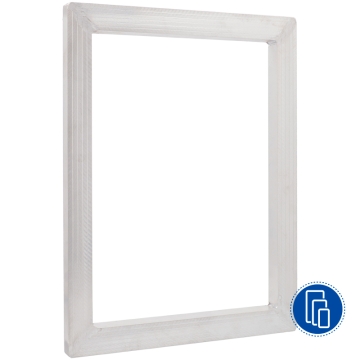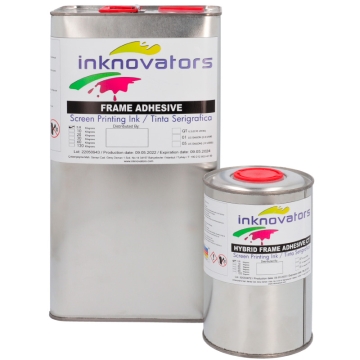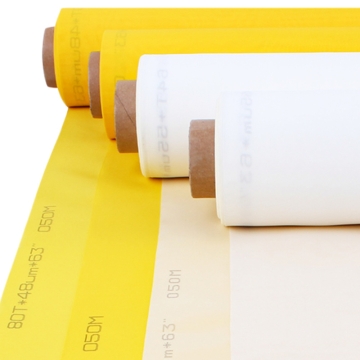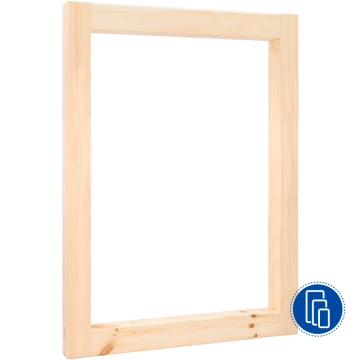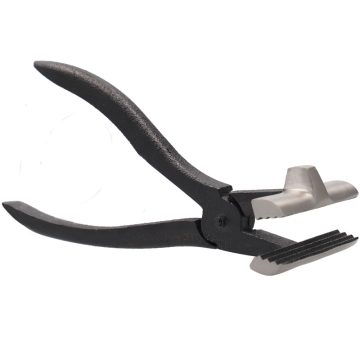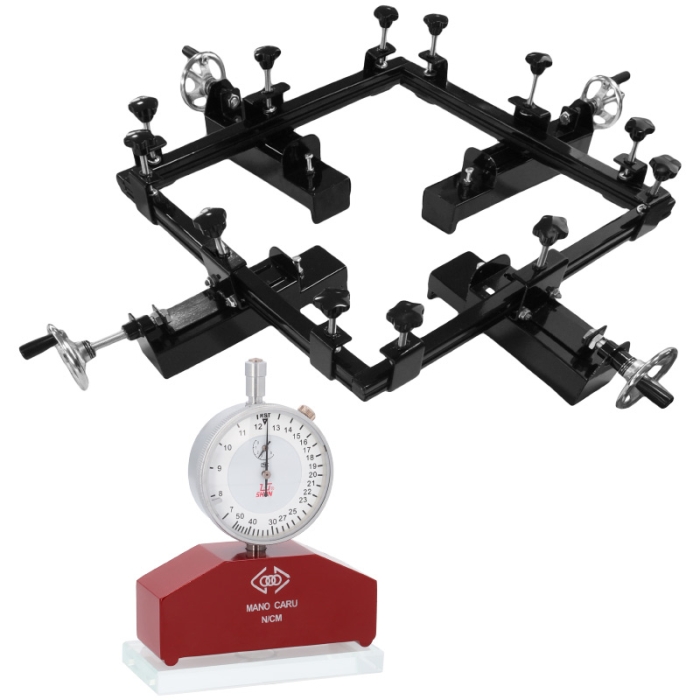
Manual Screen Stretching Machine
Extendable manual screen stretcher for screen printing frames. Designed to stretch the mesh and fix it to the frame mechanically.
- Very strong metal structure
- Suitable for frames with a maximum external size of 60 x 60 cm and up to 5.5 cm thick
- You can also purchase a tension meter to measure the tension of the mesh

More information about the manual screen stretching machine
INDEX
> What does the machine include?
> Machine component for each metal part
> Installation and operating instructions
DESCRIPTION
- Frame made up of 4 independent metal parts. Each of these parts must be fitted on each side of the frame and the mesh, surrounding its entire perimeter
- Handwheel to stretch the mesh towards the outside of the frame
- Mechanical stretching allows you to tighten the entire surface of the mesh simultaneously and uniformly. This makes it easier to adhere the mesh to the frame by using fast-drying, solvent-resistant adhesives
- Easy to install, use and carry
THINGS TO KEEP IN MIND
- The mesh must be larger than the frame, at least 10 cm per side
- By combining two of these machines, you will have 8 parts to stretch the mesh, 2 per side. This allows you to stretch meshes of up to 1.20 cm
- We recommend the use of a tension meter for more precise results. It has a measuring range of 7-50 newtons
- It is not recommended to use staples to fix the mesh to the wooden frame. High tension may cause tearing when piercing the fabric with staples
WHAT DOES THE MACHINE INCLUDE?
| 4 | Bases |
| 4 | Mesh clamps |
| 4 |
Handles for the stretching handwheels |
MACHINE COMPONENTS FOR EACH METAL PART
- 3 clamps: hold the bars and keep them steady, at the same height as the base
- 1 bar with 2 platens: each bar is made up of 2 platens to hold the mesh. They must be placed inside the clamps, above and below the mesh like a sandwich. The lower bar is fixed, while the other can be removed. The part of the bar that touches the mesh is made of corrugated rubber for a better grip
- 3 adjustment knobs: to keep the mesh fixed inside the clamps while stretching the screen. They have a pressure-resistant conical washer at the lower end, which prevents damage to the contact surface of the bolt (upper bar)
- 1 base serves as a support and is perpendicular to the bars. It has 2 slots allowing the bars to slide. Sliding it forward or backwards will help adjust the structure to the frame. When stretching, the frame sits between the bars and a metal plate that works as a stopper
- 1 adjustment wheel: allows you to move the bar back and forth through the slots. The handwheel rotates and moves along a metal bolt. This bolt has 3 lock washers to prevent any damage due to pressure. The washers remain between the base and the handle when they reach the stop
DIMENSIONS (APPROX.)
| Metal part (cm) | 60 x 20 x 48.5 |
| Wrap (cm) | 60 x 4.5 x 3 |
| Bar (cm) | 60 x 2 x 3 |
| Base (cm) | 8 x 10 x 35 |
| Packaging (cm) | 66 x 18 x 51 |
INSTALLATION AND OPERATING INSTRUCTIONS
ASSEMBLING EACH PART OF THE MACHINE
To assemble each metal part you need 1 base, 1 bar with 2 platens, 3 clamps, 3 adjustment bolts and 1 adjustment wheel.
- Place the mesh clamp on the base. The central adjustment bolt must be positioned in the centre of the bar
- Fix the bars to the central clamp by adjusting the washers and the nuts. Use a 14” spanner to do this
- Place the plastic handle on the adjusting wheel and fasten the wheel with the nut
HOW TO USE THE SCREEN STRETCHING MACHINE FOR SCREEN PRINTING FRAMES?
- Place the parts of the machine on a flat surface suitable for this task
- The frame must have a thickness no greater than 5.5 cm and a maximum outer diameter of 60 x 60 cm. The size of the mesh must be larger than the frame, minimum 10 cm per side
- Put on each side of the frame one of the 4 machine parts
- Insert the frame into each base, with the front side facing upwards. The frame profile should be placed over the base slots, between the plate acting as a stopper and the bars
- Sandwich the mesh between the bars
- Tighten the bolts so that the mesh is securely held by the bars. Make sure that each bar has the same amount of mesh
- Turn the wheels until you reach the desired tension
- Apply a layer of adhesive on the mesh and the frame, following the adhesive’s instructions
- Wait for the adhesive to set completely, then remove the parts of the stretcher
- Trim off the excess mesh
| Ref. | 948837 |
|---|
Reviews
Share your opinion
It will only take a minute, and your opinion can help other customers.
Sign in to submit your review
Write a review
Rating
Add photos of your product (optional)
Sending review...
Error
Review sent Thank you for your interest!
Questions
No questions found for this product.
Be the first to ask a question!
Ask a question
Please complete the CAPTCHA
Submitting your question...
Error
Question Submitted Thank you for your interest!

